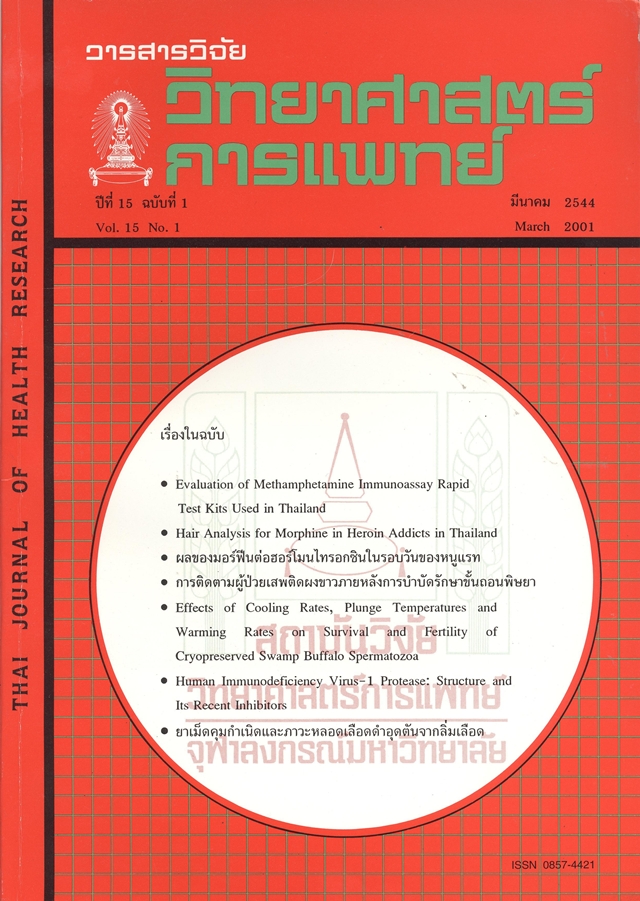Hair Analysis for Morphine in Heroin Addicts in Thailand
Keywords:
mophine, analysis, radioimmunoassay, hair, heroin addictAbstract
Hair analysis for morphine was studied in heroin addicts by using radioimmunoassay (RIA). About 50 mg of hair was cut from each heroin abuser who had come to the Northern Narcotic Control Center for drug detoxification. Different methods of hair washing and drug dissolution protocols were compared. Washing hair with distilled water (DW) three times followed by acetone and enzyme pronase hydrolysis yielded the highest morphine level. The range of morphine in the hair of heroin addicts was 0.48-11.48 ng/mg of hair and the mean ± SEM was 4.47 ± 0.33 ng/mg of hair. While the morphine level of control hair was 0-0.051 ng/mg of hair and the mean ± SEM was 0.011 ± 0.004 ng/mg of hair. The cut off level calculated from the mean + 3SD of the control group was 0.066 ng/mg of hair. The mean morphine level of addicts was about 400 times higher than control and also higher than the cut off level detected in our assay system. There was no linear correlation between urine and hair morphine levels. There was no linear correlation between the hair morphine levels and the time-dose profile of heroin abuse. This study showed that hair analysis for morphine could be detected in heroin abusers by RIA with no false negative, compared to morphine urinalysis that gives about an 8 % false negative.







